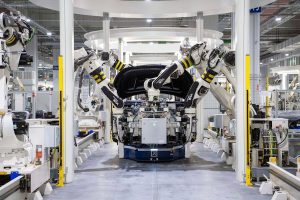What is LED technology and how can it save me money?

Today, we take LED technology and its various applications for granted; they have become part of the scenery of our everyday lives. Just walk around any city centre, even before nightfall, and you’ll see something that employs LED technology. But LED technology was actually a noteworthy technological advancement and is, in fact, the product of over a hundred years of development and refinement involving some of the most inventive scientists to work in the field of physics. So, what is the history of LED technology and how did it become such a permanent fixture in our daily lives?
The origins of LED technology can be said to date back to 1907, when American physicist Henry Joseph Round first observed the phenomenon known as ‘electroluminescence,’ which is the central concept of LED technology. Electroluminescence is a scientific phenomenon in which a material emits light on having an electric current passed through it or on being placed within a very strong electrical field. Round conducted these first experiments using silicon carbide and, as the light produced was too faint to have any practical application, no further research was conducted until 1920 when Bernhard Gudden and Robert Wichard Pohl substituted the silicon carbide for a combination of zinc sulphide and copper in an attempt to build on Round’s earlier findings.
It wasn’t until 1962, however, that the first practical application of LED technology was developed, when Nick Holonyak Jr, working at General Electric, produced a visible red light using an LED.
The numerous advantages of LED technology over more traditional forms of producing light soon became apparent, leading to increased investment in LED research as business and consumers sought to harness the benefits of the emerging technology. These advantages include:
1) Higher levels of energy efficiency
LEDs use a far lower amount of energy to produce light, meaning they are both more economical for the end-user and have a much smaller carbon footprint, making them more environmentally friendly.
2) Increased lifespan
LED lights last several times longer than their conventional incandescent counterparts. Today, some models of LED light bulbs can last for up to 50,000 hours, which means the average user should get around 10 years of use from each one. They cost more per unit, of course, but when the extended life span is factored into the equation, it becomes clear that they are the far cheaper option in the long run.
3) A wider range of colours
LED lights are available in a much wider range of colours, meaning they can be used to create a stunning visual effect or selected to complement the pre-existing aesthetic of a physical environment.
4) A greater degree of control
As LED lights work by having a current passed through a physical material, the intensity of the light created will vary depending on the force of the electrical charge. This means that LED light fittings can be modified with dimmer switches, which allow the user to choose how bright they would like the light to be, affording them a greater degree of control than a traditional incandescent light.
5) Potential for being scaled down
LED lights can be produced according to much smaller specifications, meaning that they can be used as components in products with much smaller designs.
So, given this list of benefits of using LED light of incandescent light, what are the three most relevant practical applications of LED which might save you money?
TV backlighting
As consumers are demonstrating a willingness to invest more money in their home entertainment equipment in an attempt to obtain that immersive, ‘night at the movies’ experience from the comfort of their own homes, electronics companies have responded by marketing TVs with backlights, which improve the viewing experience by reducing strain on the viewer’s eyes, thereby enhancing image quality.
The downside, of course, is that the extra energy needed to power the lights results in a bigger electricity bill. A way around this is to use LED lights for TV backlights, as opposed to less efficient light sources such as LCDs, as doing so will help keep your energy bills down.
Display screens
If you run a business and you wish to attract potential customers’ attention, a large LED display is a very cost-effective way to establish a visible public presence. If you’re looking for a large LED display designed to draw attention to your product or boost your business’ profile, there are several companies you can choose from, such as VisualLED. Using an large LED display is a very cost-effective way to reach potential customers.
Dimmer switches
Traditional incandescent lightbulbs are only capable of converting 5% of the energy to consume into light, with the rest being wasted as heat. Replacing your incandescent light bulbs with LED light bulbs is in itself a great money-saving trick, but you can go one further by installing a dimmer switch, which will allow you to set your lighting to be softer, further reducing the amount of energy they consume.






